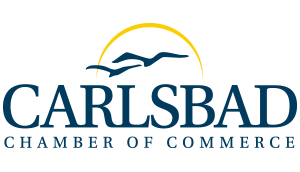By Glen Newhart, MBA, CFRE (Certified Fundraising Executive)
It’s tax season, and while you’re thinking of it, it’s the perfect time to create an action plan for charitable giving in 2017. While you have until the end of the year to make donations, if you start researching and planning your donations now, you’ll have time to make thoughtful contributions that benefit both you and your community all year-long.
Here are three charitable giving tips that will warm your heart and your wallet:
1. Look local While there are many highly visible national societies focused on specific diseases and international disaster relief, don’t overlook opportunities to give close to home. When you give close to home, your dollars stay in the community and you can see your dollars in action. Donating to a community hospital foundation, local wildlife habitat restoration or youth development group will make a positive impact on your community that you’ll benefit from for years to come.
Local organizations don’t always have the same advertising budgets as national nonprofits to reach you, so you may have to do a bit of research to find them. The IRS provides an online tool to identify organizations eligible to receive tax-deductible charitable contributions and you can narrow it by the community you live in. Search for “Exempt Organizations Select Check” online or visit: apps.irs.gov/app/eos/.
2. Follow the money Entrusting complete strangers with your money doesn’t sit well with most people, but this is exactly what happens when you donate without any involvement with the charity. Participating on an executive board or committee is an excellent way to oversee how your donation is spent. Bringing your expertise from your day job will provide you with insight as to where your dollars are going, and your professional expertise will help reduce the organization’s external costs, helping your dollars go even further. Plus, board or committee work will look great on your resume when you look for your next pay raise.
If board or committee work is not for you, you should still do your due diligence and follow the money. Nonprofit organizations are obligated to file returns that show their revenue and expenditures. If they don’t share these details on their website, you can use third-party organizations such as 990finder.foundationcenter.org to look up a charity’s performance. The typical charity spends 75 percent of its budget on programs. Look for nonprofits that hit or come close to the benchmark. The rest of a typical charity’s budget goes to administrative costs (15 percent) and fundraising (10 percent).
3. Set it and forget it Once you’ve done your due diligence and are satisfied with your charity of choice, take advantage of that organization’s recurring monthly donation program. This will allow you to donate smaller incremental amounts which won’t feel as significant when they’re spread out over the course of a year. Your recipients will love the predictability of your donations and you’ll love the lump sum at the end of the year. Plus, if you set it as an automatic payment on a credit card that offers points, you could be earning rewards on your donation (another win!)
Planning your charitable giving well in advance of year’s end has many advantages, not the least of which is the goodness you’ll feel in your heart that you’re doing good year-round.
Glen Newhart is the President of the Tri-City Hospital Foundation, which thanks to the support of generous donors, has funded nearly $50 million in programs, services and capital needs for Tri-City Medical Center, a community hospital serving Oceanside, Vista, Carlsbad and surrounding communities.
